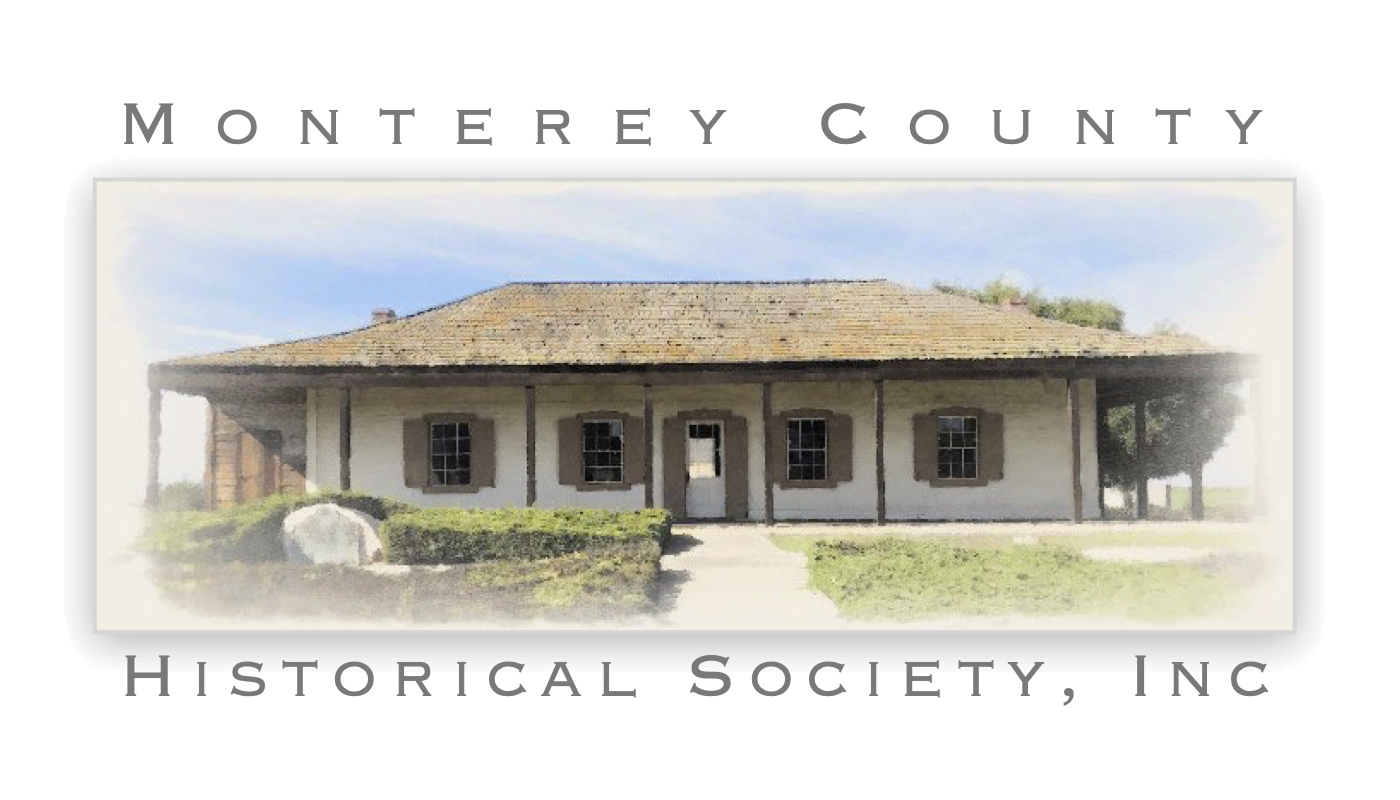by Gary S. Breschini, Ph.D.
American and foreign entrepreneurs were not uncommon in the days of Mexican rule, and their presence considerably aided efforts at transition to American rule after 1846.
Alfred Robinson estimated the non-Indian population of Alta California in 1846 at 8,000, and the Indian population at 10,000. This is a drop from an estimated aboriginal population of 133,550 in 1770. Other sources place the non-Indian population at 10,000 and 15,000 (Hammond 1971).
Immigration was not solicited of foreigners before the Mexican regime, but between secularization of mission lands beginning in 1834 and Robinson’s writing, several hundred Americans had been induced to settle in the country. In addition, a great deal of trade was carried on with British and Americans through the Sandwich Island trade route and directly with Americans, principally Boston traders.
Some of the American settlers came to California with hunting and trading expeditions following the overland route opened in about 1826. Many of these settlers obtained citizenship. A larger number, however, were connected in some way with the Boston trade. Some 300 foreign males resided in California by 1835, according to Bancroft’s estimates, but not all were welcome citizens. (Those that participated, with Isaac Graham, in the Alvarado revolution of 1836 were considered obnoxious even in the eyes of permanently settled Americans.)
The American population in Mexican California was comprised of two rather distinct social groups. One was that of the “maritime elite,” who arrived as agents of commercial houses in the port towns, where their desire to remain in good standing with the host country decreed citizenship, conversion to Catholicism, marriage into a prominent family, political and social prominence in the community, and eventually a land grant. The other group was comprised of former hunters and trappers, predominately from the southern and border states, who found California a place where their skills and ingenuity were to overcome American social shortcomings in education and birth. Both groups blended Yankee and Hispanic cultures in a distinctively California lifestyle that resulted in elegant survival and high social standing.
Of these men, Thomas O. Larkin of Monterey achieved much historical attention with his appointment as the American Consul in Mexican California, in hopes of bringing California peaceably into the Union.
Walter Colton, appointed Alcalde of Monterey in 1846, approached California with Yankee disapproval but soon became an advocate of Mexican cultural values, particularly as his countrymen arrived with greed in their eyes during the Gold Rush. With Robert Baylor Semple, Colton started the first newspaper in California on August 15, 1846.
Richard Henry Dana’s literary classic Two Years Before the Mast described California in mostly favorable tones, and he found upon his return to California in 1859 that he was revered as a founding figure in the history of the state.
William Hartnell was a naturalized Englishman who arrived in California with the first opening of California ports to trade under the Mexican revolutionary regime in 1822. Appointed as a resident manager in Monterey for the partnership of McCullogh and Hartnell, agents for the British trading firm of John Begg and Company, Hartnell embraced much of the California culture while trying to improve upon it by offering educational facilities to the sons of merchant class Californios. He was later appointed to serve as inspector of the missions during the period of secularization, a tribute to his standing in Mexican political circles.
Hartnell hired Scotsman David Spence from the company’s Lima office to devise a way of salting and packing the California beef for shipment from German Captain Charles Wolter’sMonterey County grant holdings. Spence in turn married the daughter of Buena Vista grantee Jose Mariano Estrada, and received a grant adjacent to his father-in-law’s. Spence subsequently went into business partnership with Peruvian Juan Malarin, another Monterey County grantee.
Yet another prominent Monterey County landowner, David Jacks, married the daughter of an 1841 German Monterey entrepreneur, J.F. Romie, who was involved with the Salvation Army’s Fort Romie colony effort on Mission Soledad lands in later years.
Some of the pre-1846 immigrants to the Monterey County area, and the dates they arrived (where known), are listed below (this list is under construction).
Garner, William Robert
Hartnell, William (1822)
Larkin, Thomas O. (1832)
Little, Milton A. (1844)
Meadows, James (1837)
Milligan (Mulligan), John (1814)
Spence, David (1824)
Swan, Jack (1843)
Trescony, Alberto (1842)
Watson, James (1824)
White, Thomas (1840)
Copyright 2000 by G.S. Breschini
Sources:
- Breschini, G.S., T. Haversat, and R.P. Hampson, A Cultural Resources Overview of the Coast and Coast-Valley Study Areas [California] (Coyote Press, Salinas, CA, 1983).
- Cook, S.F., The Conflict Between the California Indian and White Civilization. (University of California Press, Berkeley, CA, 1976).
- Fink, A., Monterey County: The Dramatic Story of its Past. (Valley Publishers, Fresno, CA, 1978).
- Hammond, G.P., Introduction to The Californian, Volume One: Facsimile Reproductions of Thirty-eight Numbers, a Prospectus, and Various Extras and Proclamations, Printed at Monterey Between August 15 1846 and May 6, 1847. (John Howell Books, San Francisco, CA, 1971).
- Hoover, M.B., H.E. Rensch, and E.G. Rensch, Historic Spots in California, third edition. (Stanford University Press, Stanford, CA, 1966).
- Robinson, A., Life in California during a Residence of Several Years in that Territory. (Peregrine Smith, Santa Barbara, CA, 1970).
- Royce, J., California. (Peregrine Smith, Santa Barbara, CA, 1970).


